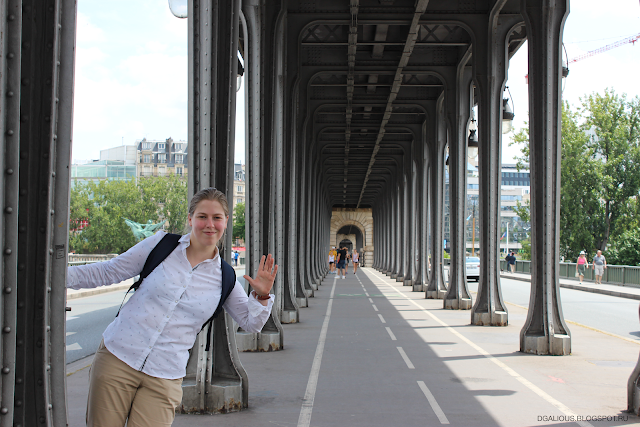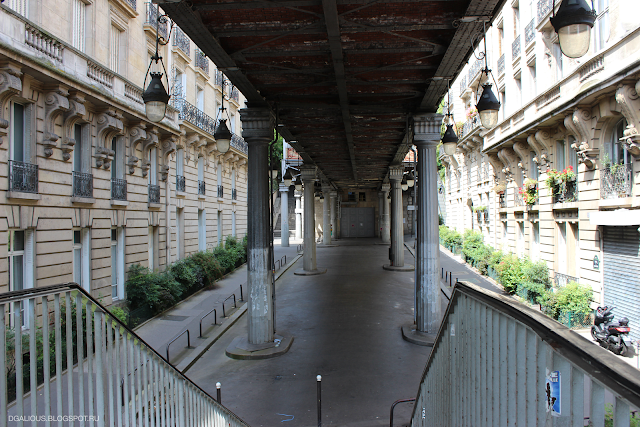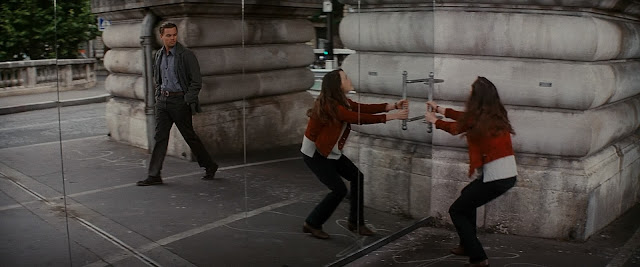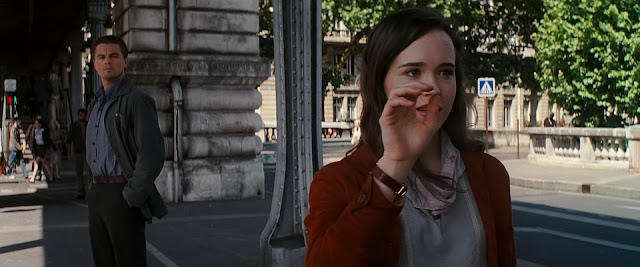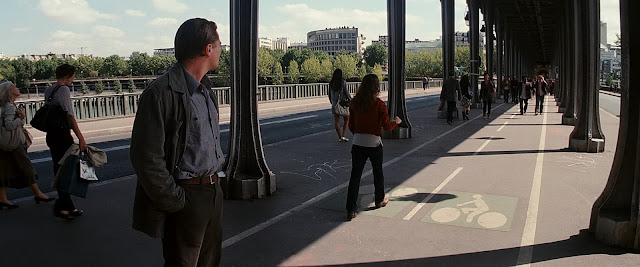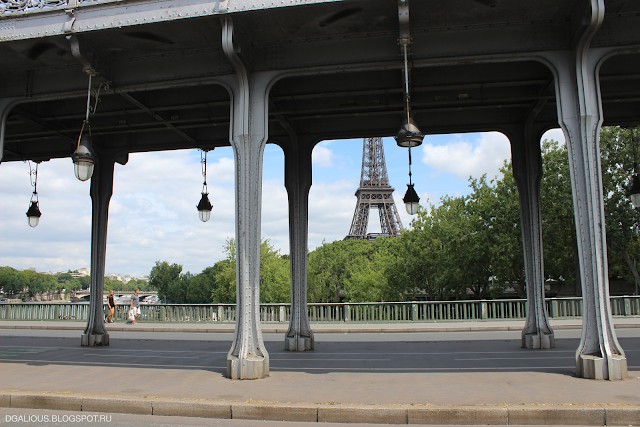Russian version.
Welcome back!
For today we would be discussing the second "zone" of shooting the epic film called "Inception" in Paris. Film was made in 2010. Director - Christopher Nolan.
The first part of this article is here:
Discovering the ''Inception'' filming locations in Paris - Part 1 - Rue Bochut.
This part is about the locations around the Bir-Hakeim bridge ( (fr.) Pont de Bir-Hakeim ). This bridge lays connects the 15th and 16th parisian districts. "Bir-Hakeim" metro station is the closest station to the Eiffel Tower, which is easilly noticeable from this bridge. The film crew obviously have used it. But maybe the reason of choosing this place as a filming locations was the unique design of the bridge. Those steel pillars were so ideal for the required impression, that I am getting lost between guessworking about was the way Ariadna had created that bridge the original idea at an early pre-production stage, or the screenwriter (J. Nolan) was adapting it after knowing about the location already? Again, I have no chance to guess it right. But I can observe. Join me. And bring some chocolate against the dementors, because in my dreams there is something more around than only filmmakers. ;)
Let's begin with the biggest part. The mirrored scene. By the plot Cobb lets the new architect to demonstrate her talents in architecture design. She builts the bridge simply by ...no, not simply at all... by closing the mirrored doors between four single standing steel pillars. After catching the reflections of them into a straight line she breaks the glass and the new bridge is giving a path for another riverside. How Cobb reacts on it:
- Very impressive... I know that bridge..this place is real, isn't it?
- Yeah, I cross it every day to get to the college.
- Never recreate places from your memory! Always imagine new places!
And etc.
So, the place is more real, than I imagined. I thought, that production designers have built some pillars sets for giving the illusion, that the bridge has different background views at the same location. Sounds complicated, I know, but in the film the bridge is being built from a scratch right in front of your eyes. I thought, that with those pillars they were shooting at different angles, different spots. For example, when the river is crossing the path, or goes along of it. 90 degrees turning around...
Also I've heard that the bridge has two levels: walking level for pedestrians and metro level for trains. I imagined first above the second, but the reality is the opposite. Trains are passing through the bridge overhead, and you can walk or ride a bicycle on the ground. Bir-Hakeim bridge is 237 meters long and 24.7 meters wide. You can imagine the strength of echoes on it between the pillars, but I expected at least any sound by knocking the pillar. Nothing. Trully silent as steel.

The bridge is closed by its construction, but the sun is giving an interesting lightning inside of arcs. A smooth diffused light, but with a strong natural lightning, reflecting from the asphalt, so you can hide at the shadow only behind the stony arcs.
Nevertheless, this doesn't mean, that you won't need any light or reflecting tech on set, if you would decide to shoot at that place.
Speaking about the shooting, even during my several short visits at Bir-Hakeim bridge, I met a relativelly a lot of people shooting with professional cameras. For exaple they were shooting some stuff for their work/hobby: the fashion photo-session starring the male actor, wearing different clothes, or the actress, riding the bicycle, or simply the view of Eiffel Tower...
Pont de Bir-Hakeim is a really popular place for shooting, and it has all reasons for that.
As we've done this before, let's take a look at the actual place not as the filming location.
As, you may know, the bridge starts from the "Passy" metro station, and ends with the "Bir-Hakeim" metro station.
Here it is, the "Bir-Hakeim" metro station:
From both sides of a bridge there are subway stations, so the viaduc is connected with the land through litle stairs. This riverside is quay Branly. The other - avenue of President Kennedy. You can recognize that place. It is the location of the Cobb's crew workshop. Remind the shot, where Arthur reaches the entrance door. It is the metro building, and of course there is a very busy place behind those grey doors. Those doors are right at the end of perspective on this photo. So, they were shooting out there, looking to the left side of the corner.

I'll put some screenshots from the movie for a better plot navigation. (For the copyringt concerned ones: I am not making any money on this.) And of course, the camera spot maps.
Let's turn around at 180 degrees and take a look at the tiny, but somehow beautiful wooden bridge prelude of the Bir-Hakeim bridge. Maybe I liked it so much because of the flexible stages at it stairs...
In film you are looking at this direction through a wonderfull and difficult short shot with handheld camera mevement. In there you can see how Ariadne creates the objects in front of her path on the go. You can notice how huge amount of work had fallen on vfx-artists's shoulders about matte-painting and rotoscoping.
Now, we are proceeding futher to the basic part of the brige. As you can see, all pillars and perspective of Bir-Hakeim bridge is hidden for a "pre-building" moment of time. You can see an excellent compositing & matte painting. But let's observe this particular snapshot more closelly a bit later.
First, I suggest you to watch my video about that shot with mirrors. You can simply compare how this place looks in reality after watching the film shot for several times in a row.
Now. Take a look back at the last film snapshot. The road is turned into a cornered place. Visual effects artists have combined several footages to make the illusion, that there is no bridge behind that arc, and no car can reach the other riverside. This concerns not the green railing only. Look at the railing corners, the sidewalk, the road markings. All those tiny details. They are making the effect real, not any noticeable graphics like some lifting up pillars...
So, how they were shooting this block of shots? Let's take a look at the map. All points at this image are marked on that little wooden bridge.
With the red circled arrow I've marked the path of that famous shot with mirrors. The cameraman was working at one spot, but turned around for the full 360 degrees panorama. Let's take a look at that shot in a shape of a storyboard. Remember, it is a one long take: from Ariadna requires a mirrored door for closing it, and up to the moment, when she is going to break the glass. then we are switching between 180 degrees angles again.
Well, what is real and what is not? Everything, except the reflections in mirrors and the limited carriageway before of the trick. The background buildings, corners, pillars, road markings, tubes & arcs are real. Eiffel Tower is real too, hehe.
Now, try to imagine how difficult was to perform this visual effect. It is impossible to perform with 3D-graphics only. You definetly might wish to use some real additional footages from the location. But which? What angles to choose, with what optics, under what lightning? All those questions have found their answers in vfx-supervisor's mind.
I will never know what exactly they've used, but these areas look usefull:
The rest shots were made closer to the middle of the bridge and don't look very difficult.
The overall map of camera spots at Pont de Bir-Hakeim.
The final image, photo of two CG-nerds. Me, Galina Yakovleva, and my friend, Nicolas Brunet.
That's all. I hope, you've enjoyed with my medias & notes. Keep learning and stay well!


